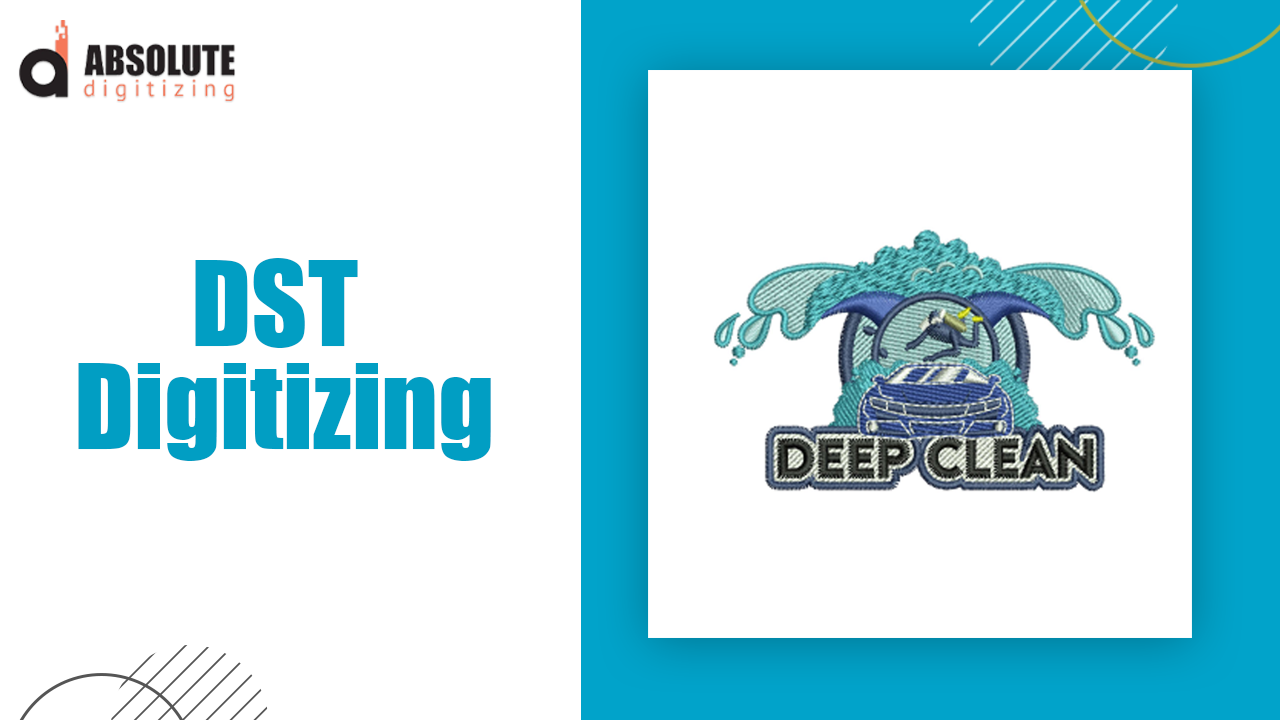Embroidery enthusiasts know that mastering the technical aspects of embroidery can be just as rewarding as the creative process itself. Among these technical elements, understanding file formats is crucial, especially the DST file format. The DST format, widely used in the embroidery industry, offers unique advantages and is essential for efficient machine embroidery operations. In this guide, we will explore the DST file format in depth, examining its features, uses, and benefits for embroidery enthusiasts and professionals alike.
What is the DST File Format?
The DST file format is a proprietary embroidery file format originally developed by Tajima, one of the leading manufacturers of embroidery machines. It is one of the most popular formats used in the industry due to its simplicity and compatibility with a wide range of machines.
Understanding the Basics of DST
The DST file format is known for its simplicity and reliability. It contains essential stitch data that guides the embroidery machine in creating a design. Unlike some other formats, DST files do not include color information, focusing instead on the stitching instructions.
Why Use DST Format?
The DST format is favored for its wide compatibility and ease of use. Because it does not include color information, it is a versatile option that can be easily shared and used across different machines without worrying about color discrepancies.
Limitations of the DST Format
While the DST format is widely used, it does have limitations. The lack of color data means that users must manually input color information, which can be time-consuming. Additionally, its simplicity may not support highly complex designs with intricate details.
How Does the DST File Format Work?
Understanding how the DST file format works is key to effectively using it for embroidery. The format focuses on stitching data, providing precise instructions to the machine on how to execute a design.
Stitch Data in DST Files
DST files include detailed stitch information such as the start and stop points, stitch length, and needle penetrations. This data ensures that the embroidery machine accurately replicates the design.
Machine Compatibility
One of the main advantages of the DST format is its broad compatibility with various embroidery machines. This compatibility makes it a go-to choice for professionals who work with multiple machine brands.
Editing and Customization
Although DST files lack color information, they can still be edited using embroidery software. Users can adjust stitch length, density, and other parameters to customize the design to their preferences.
Advantages of the DST File Format
The DST format offers several advantages that make it a popular choice among embroidery enthusiasts and professionals. Its simplicity and reliability are key factors in its widespread adoption.
Wide Industry Acceptance
The DST format is widely accepted in the embroidery industry, making it easy to share designs across different platforms and machines. This acceptance ensures that designs can be reproduced consistently, regardless of the machine used.
Ease of Use
The simplicity of the DST format makes it easy to work with, even for beginners. Its straightforward structure allows for quick and efficient design execution without the need for complex software.
Reliable Performance
DST files are known for their reliable performance, ensuring that designs are stitched accurately and consistently. This reliability is crucial for commercial applications where precision and quality are paramount.
Limitations and Challenges of the DST File Format
Despite its advantages, the DST format is not without its challenges. Understanding these limitations is important for effectively using the format in embroidery projects.
Lack of Color Information
The absence of color information in DST files is a significant limitation. Users must manually input color data, which can be time-consuming and prone to errors if not done carefully.
Limited Detail Support
The simplicity of the DST format means it may not support highly detailed designs with complex shading and textures. Users may need to use additional software to achieve the desired level of detail.
Conversion Issues
Converting designs to the DST format can sometimes result in loss of detail or quality. It is important to use high-quality conversion software to ensure that the design maintains its integrity.
How to Convert Other Formats to DST
Converting embroidery designs to the DST format is a common requirement, especially when working with different machines. Here’s how to effectively convert other file formats to DST.
Using Embroidery Software for Conversion
Embroidery software, such as Wilcom, Embrilliance, or Hatch, can be used to convert designs from various formats to DST. These programs offer a user-friendly interface and advanced tools for seamless conversion.
Steps for Conversion
- Import the Original File: Load the design into the embroidery software.
- Edit and Adjust: Make any necessary adjustments to the design, such as resizing or changing stitch parameters.
- Export as DST: Choose the DST format from the export options and save the design.
Ensuring Quality During Conversion
To maintain the quality of the design during conversion, it is important to use high-quality software and carefully adjust the settings to match the original design’s specifications.
Common Conversion Challenges
Conversion can sometimes lead to loss of detail or changes in stitch density. It is crucial to preview the design and make any necessary adjustments before finalizing the conversion.
Tips for Using the DST File Format Effectively
For embroidery enthusiasts looking to make the most of the DST format, here are some practical tips to ensure success in your projects.
Optimize Your Designs
Before converting to the DST format, optimize your designs by adjusting stitch density, length, and other parameters. This optimization ensures that the design is executed flawlessly.
Use High-Quality Software
Invest in high-quality embroidery software that offers advanced editing and conversion features. This software will help you maintain the integrity of your designs and achieve the desired results.
Regularly Update Your Skills
Stay updated with the latest trends and techniques in embroidery. Regularly improving your skills will help you make the most of the DST format and create stunning designs.
Exploring Other Embroidery File Formats
While the DST format is widely used, it is not the only format available. Exploring other formats can expand your design possibilities and enhance your embroidery projects.
Understanding PES Format
The PES format is another popular embroidery file format, commonly used by Brother and Babylock machines. Unlike DST, PES files include color information, making them ideal for complex designs.
Exploring JEF Format
The JEF format is specific to Janome machines and is known for its user-friendly interface. JEF files support multiple colors and stitch types, making them suitable for detailed designs.
Comparing Different Formats
Each file format has its unique features and benefits. Comparing different formats can help you determine which one best suits your needs and preferences.
Conclusion: Mastering the DST File Format
The DST file format is a cornerstone of the embroidery industry, offering simplicity, reliability, and wide compatibility. By understanding its features and limitations, embroidery enthusiasts can effectively use the DST format to create stunning designs. Whether you’re a beginner or a professional like Absolute Digitizing, mastering the DST format will enhance your embroidery skills and broaden your creative possibilities.
4o







